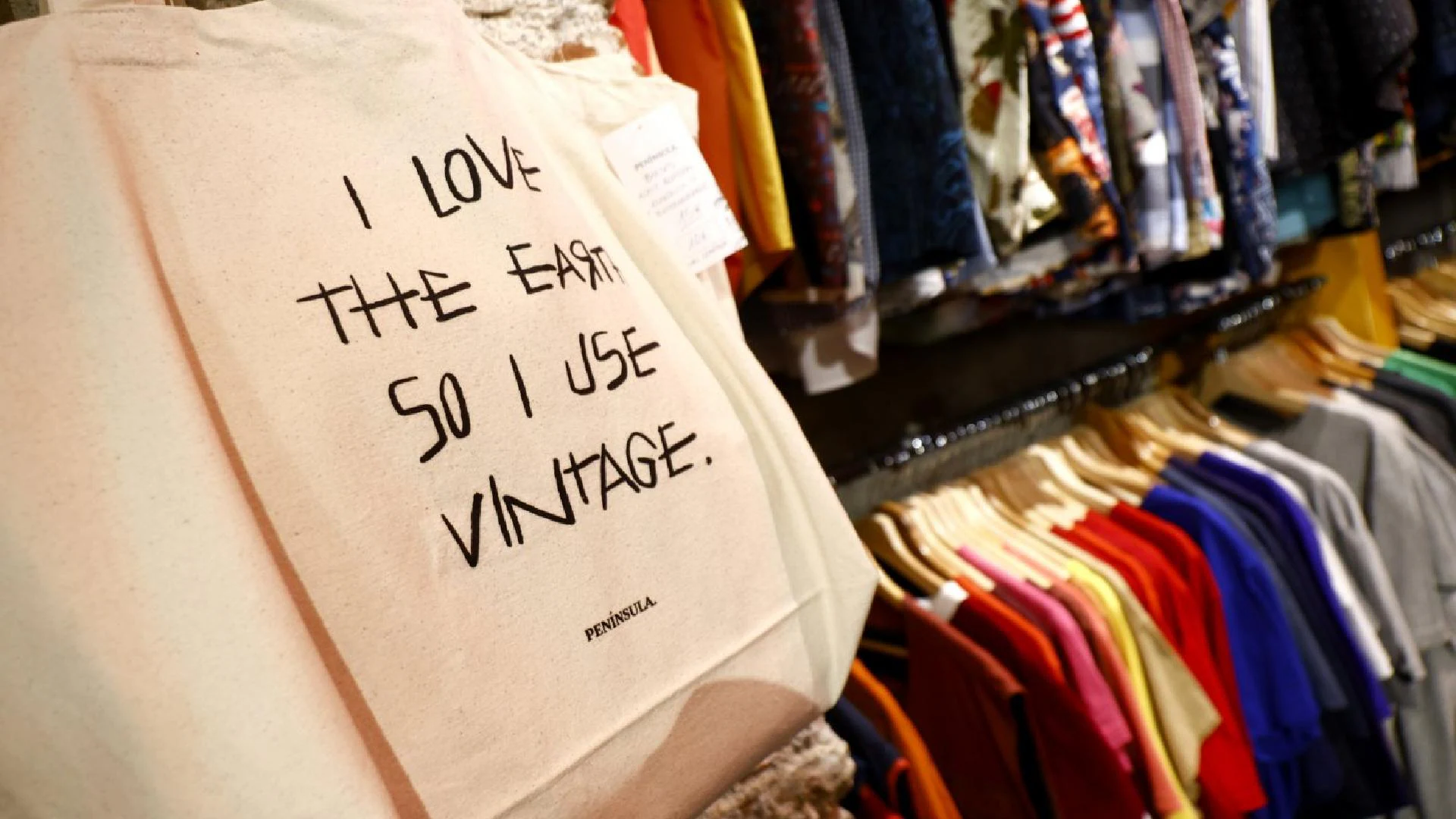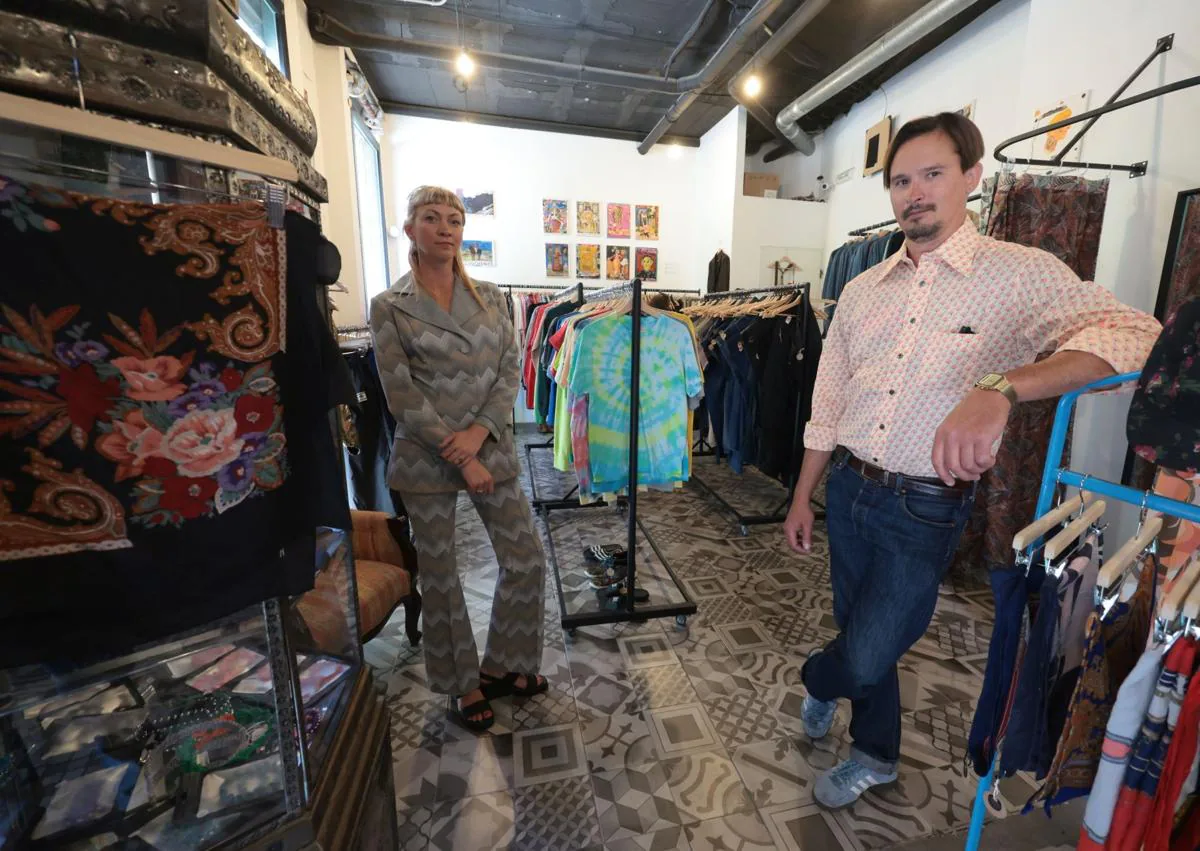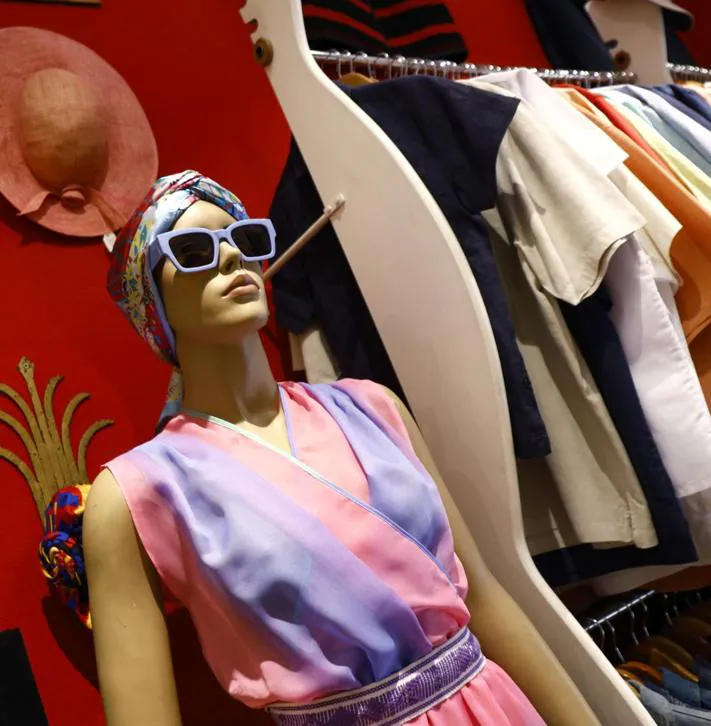Shopping
A well kept secret: where do vintage shops get their clothes from? | Sur in English

Friday, 14 June 2024, 12:56
Not all items of clothing given to charity ever reach vintage or second hand shops, but these establishments, becoming ever more numerous in Europe, that sell used clothing and accessories, are on the rise in Europe, Spain and also in Malaga.
This is how Javier Villanueva explains it, who, along with Laura Bueno, runs two vintage stores in Malaga city: Flamingos (Calle Ollerías) and Península (Calle Mártires). Villanueva adds that, although people donate clothes to charities thinking that they will be sent to disadvantaged people, most charities actually sell the items to third parties – large wholesalers – who distribute them in second hand stores, and it is with the money from this transaction that they help underprivileged people.
On a more local level, organisations such as Cudeca or Madre Coraje sell the second hand clothes, which they have received directly from people who donated them.
A vintage item of clothing is at least 20 years old, with proven quality and resistance
Veronika Vallimäe and Harri Tiidus, owners of the vintage shop, Oysters (Calle Ollerías), explain that they sometimes receive clothes that were previously sent to African countries, but which remain unused there as they do not suit their needs. These clothes are then returned to Europe.
Marina Della Mea, however, who has been the owner of Época Vintage (Calle Casapalma) for 30 years, says that she has never asked her suppliers where they get the clothes that end up in her shop. Nor does she disclose, as is the case with all of her competitors, the names of the wholesale companies she buys from: she keeps the origin of her inventory a secret because it is, she says, “the most precious thing” she has; it is what differentiates her offer from other stores.
Javier Villanueva runs Flamingos, an American vintage store (top);, Oysters (Calle Ollerías) is run by an Estonian couple (left); Vintage clothes in Epoca Village (right).
Marilú Báez / Salvador Salas


In any case, an enormous parallel market of used clothes seems to have been established. To reach this conclusion, you only have to take a walk through the city centre, where there is a good handful of shops full of men and women’s clothing, as well as accessories to complete the outfit.
Malaga is a ‘newbie’ to vintage shopping, in contrast with Barcelona or Madrid. In Madrid, Tiidus says, referencing a figure from an industry meeting, there are 40 second hand shops, an opening rate of one new shop per month.
Interestingly, Tiidus says that a single wholesaler in the sector – one of his suppliers – can move up to 50 tons of clothing per month.
Veronika and Harri, originally from Estonia, buy their clothes from Amsterdam, Naples or the US, and they often travel to Holland to select the items which end up going on sale, although they sometimes make the decision via a video call. Veronika explains that they choose garment by garment, according to the tastes and trends of their clientele. Because, she says, there are stores that buy their clothes blind, by weight. Marina Della Mea also chooses her clothes carefully and remembers thirty years ago, when she started the business, she would buy them in Italy, though they usually came from Germany – second hand clothes travelled from rich countries to the most needy “sub economies”, as she refers to them.
Unsold stock
Javier Villanueva explains that, when starting up his American clothing store ten years ago, he would often fly over to the US, but he now has a network of providers which means that he does not need to travel. He also points out that although 95% of items in store come from the US, around 10% is not strictly second hand, but rather unsold inventory that once belonged to major brands, who make it increasingly difficult for third parties to profit from the sale of their creations.
But if most clothes in vintage stores were once donated, why don’t all donated clothes end up there? Firstly, because the strict definition of vintage clothes – the condition for them to be put on sale in these establishments – is that they have to be at least 20 years old, which Della Mea extends to 30. Another reason is that vintage store owners want good quality fabrics that have survived the passage of time and can continue to do so, as well as special designs, since one of the reasons their customers buy vintage is that they do not want to dress like everyone else.
After acquiring the clothes from wholesalers in this huge parallel market of second hand clothes, those store owners have to check the garments to see if they are missing a button, to mend a seam, and to clean them, although they have already had to be well cleaned to pass the borders. It is a job done by the vintage shops themselves.
One argument for the success of vintage shopping is new environmental awareness: the sector boasts that its clothes are the opposite of fast fashion, because after living a long first life, a second one awaits them, following their restoration (and sometimes redesign, Oysters has found that the products that sell the most are denim shorts, which are sometimes not in stock, so they make them using denim from other second hand pieces. In this regard, there is a growing belief that recycling is necessary to reduce the production of clothes, since the textile industry is one of the most water polluting sectors.
But vintage shop owners also suggest that the journey the garments take – from distribution centres around the world to reach these third party stores – has an environmental impact, linked to transportation. Villanueva is aware of this and is trying to ensure that Península is supplied with local products, more and more of which come from Spain. But for Flamingos, he says that it is impossible to do anything similar: there is a demand for Hawaiian shirts, for example, or baseball jackets, which come from the US.
In danger of extinction?
The owners of Oysters have noticed their customers are mostly tourists – not only are they more inclined to spend while on holiday, but it is also cheaper in Spain, so they may stock up on coats and jackets in the summer. Locals are still wary of second hand, they say – it can be paradoxical that a British, Dutch or American person buys something in Spain that comes from their country of origin.
But what they all agree on is that their years – not their days – are numbered: since the 90s, fast fashion has become widespread, and its clothes will not be accepted as vintage in the future due to their poor quality.
Although there may be another business niche in the future, the one developed by Conchi Lorente in her store at Paseo de los Tilos involves receiving used clothes from her customers. She puts them on sale at an agreed price, which is divided 60% for her and 40% for the seller, but if a new season arrives and the garment has not been sold, the owner can take it back, or it is donated to Asaec or Hermandad Blanca. Through this process, Lorente says that she helps people to get money for what they do not use as well as helping other people to buy inexpensive clothes, and she helps NGOs, to which she has donated clothes that have gone to charity markets or Ukraine.










